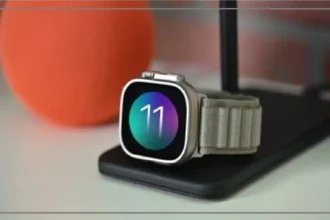The new “Stolen Device Protection” feature in iOS 17.3 aims to provide an additional layer of security in case someone steals your iPhone and also obtains your passcode. This can be a rare but very problematic situation, as the thief would normally have full access to all your personal data, accounts, and saved passwords.
The Stolen Device Protection feature adds some extra obstacles for the thief to prevent them from accessing critical information or making changes to your accounts. Let’s see exactly how the new protection works and what it does.
How Stolen Device Protection Activates
The key aspect of Stolen Device Protection is that it activates when your iPhone detects it is in an “unknown location” compared to familiar places like your home or workplace.
As soon as the iPhone realizes it is likely stolen and in an unfamiliar place, Stolen Device Protection kicks in. You will receive notifications immediately as well as a second alert one hour later.
What Stolen Device Protection Does
When activated away from “trusted” locations, Stolen Device Protection enforces the use of Face ID or Touch ID for several sensitive actions on the iPhone:
- Viewing saved passwords in iCloud Keychain – The thief cannot access any of your saved website or app passwords without authenticating with biometrics first. This adds a major obstacle to accessing critical accounts.
- Making purchases using saved Safari payment methods – Any credit/debit cards or Apple Pay details saved in Safari cannot be used to make purchases without Face ID or Touch ID. This prevents thieves from racking up fraudulent charges.
- Applying for a new Apple Card – Stolen Device Protection blocks applications for an additional Apple Card being opened without biometric authentication.
- Viewing or using your Apple Card details – The thief cannot access the virtual version of your Apple Card in Wallet to see the card number without authenticating.
- Turning off Lost Mode – If you have marked your device as lost in Find My, Lost Mode cannot be disabled without Face ID/Touch ID. This maintains your ability to track your device’s location.
- Erasing all content and settings – A thief cannot fully wipe and reset your iPhone without authenticating first. This may allow you to still track the device’s location for recovery.
- Setting up a new iPhone with your existing data – Stolen Device Protection prevents the thief from using your data and accounts to set up a brand new iPhone.
In addition to the biometric authentication requirement, some of these sensitive actions also enforce a one-hour security delay when attempted away from familiar locations. This means a second Face ID or Touch ID scan will be required after a 60 minute waiting period.
The security delay applies to actions like changing your Apple ID password, updating account recovery options, changing your iPhone passcode, and disabling Stolen Device Protection itself.
When Security Delays Don’t Apply
Importantly, Stolen Device Protection recognizes “familiar” locations like your home and workplace. If your iPhone detects it is at one of these trusted places, the biometric requirements and security delays are waived for convenience.
So, if you are at home and need to update your Apple ID password or Apple Card details, you can do so immediately with just your regular iPhone passcode or biometrics. No further authentication or delays are enforced in familiar locations.
How to Enable Stolen Device Protection
Stolen Device Protection will arrive as part of iOS 17.3, likely launching publicly in January / February 2024. Once you update to iOS 17.3, here are the steps to enable the feature:
- Open the Settings app
- Tap Face ID & Passcode (or Touch ID & Passcode if your iPhone has a Home button)
- Scroll down and tap “Stolen Device Protection”
- Toggle the switch for Stolen Device Protection to the ON position
Stolen Device Protection will now be active and protecting your sensitive iPhone data in case it falls into the wrong hands.
Conclusion
While no anti-theft system is perfect, Apple’s new Stolen Device Protection delivers important extra barriers for thieves who steal your iPhone and also obtain your passcode. By enforcing biometric authentication and security delays for critical actions, it prevents easy access to personal data and disables some account changes.
Be sure to update to iOS 17.3 when it launches and enable Stolen Device Protection for this important added layer of iPhone security.





